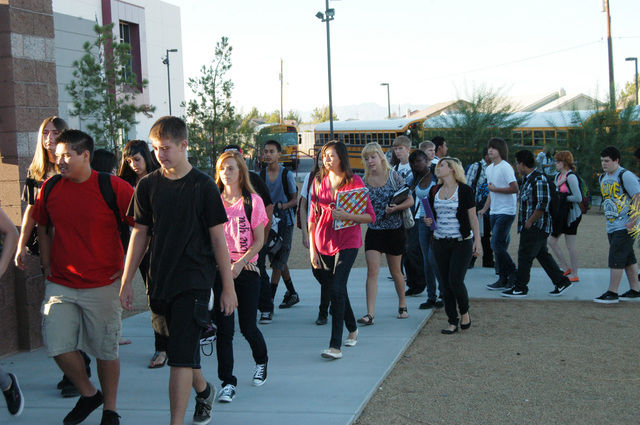
Though many elementary, middle and high school students across the Silver State will take part in the annual Nevada Moves Day today, the outlay of Nye County School District zones don’t lend to participating in the event.
Aside from the exercise and health aspects, the Nevada Department of Transportation promoted event was conceived as a way to help students learn about bicycle and pedestrian safety as well as raise awareness about pedestrian safety in communities.
Nye County School District Transportation Supervisor Cameron McRae said this week that administrators within the district were informed about the event, but it’s up to the specific school to implement the program.
Today, walking and bicycling events are planned for students in Carson City, Clark and a handful of other school districts in the state. The event launched in 2010.
“We have made efforts to participate over the years and I know our middle school did participate in a big way during one of those years,” he said. “I don’t know whether the schools here will be able to fit it in this year or not.”
With a total enrollment of more than 5,200 students, roughly 3,175 students are transported to and from school each day.
McRae said due to the configuration of local residences within the community in relation to area schools, the idea of elementary school children riding bikes or walking to school, is not a favorable option for many Nye County students.
“We are the largest geographical school district in the country and Nevada is unique in the fact that each county has one school district,” he said. “We use the term ‘remote rural’ and we transport about 60 percent of our students.”
From first grade through the ninth grade, the number of students transported to school by bus fluctuates.
In other words, when students start getting their driver’s licenses or are old enough to ride with somebody, the percentage of ridership goes up and down. McRae said. “It varies from community to community.”
McRae also said a majority of kindergarten students are transported to school by their families.
As an example, he used one elementary school located in the heart of town.
J.G. Johnson is located not far from many residential homes.
“That school probably has the highest amount of students who walk and it’s not a lot but it’s the closest thing we have to a neighborhood school, yet we bus more students there because of the way it’s configured,” he said.
“Very few Nye County students walk or ride bicycles to school,” he said. “My experience in being at various schools on various days in the morning, I can see that very few students walk or ride a bike to school. If you go to the middle school during a mild spring days, you might see a half dozen bicycles.”
Along with NDOT, Nevada Moves Day is sponsored locally by the Western Nevada Safe Routes to School Program, which works to combine education, encouragement and evaluation strategies to help students walk or bike to school instead of being dropped off in cars.
Still, McRae said motorists in the community should pay extra attention to the few students who do walk or ride bikes to their respective campuses.
“We have no crossing guards in Nye County,” he said. “Crossing guards are a function of law enforcement and based upon how few students walk or bike to school, a crossing guard program at this moment doesn’t seem to be very prioritized.”
McRae also reminded parents that the recent time change adds to the challenge of drivers and the few kids who do walk or bike to school.